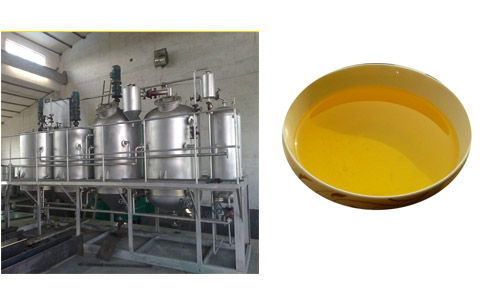
Crude oil is the oil that has just been squeezed out by an oil press, and is pre-pressed without being refined. Its main component is a mixture of glycerol trifatty acids, and it also contains non-glycerol substances, collectively referred to as impurities.
1. Suspended impurities: including silt, preforms, powder and other solid impurities. The existence of these impurities is conducive to microbial activities, making the oil easily hydrolyzed and rancid, and cannot be eaten;
2. Peptic impurities: including phospholipids, proteins, sugars, etc., the most important of which is phospholipids. The presence of these impurities not only makes the oil hydrolyzed and rancid, the appearance is turbid and dim, but also produces a lot of foam and black precipitates during cooking; It seriously affects the color and flavor of stir-fried vegetables and fried foods, and at the same time loses the nutritional value of the oil itself, and has certain toxicity;
3. Oil-soluble impurities: including free fatty acids, pigments, hydrocarbon waxes, aldehydes, ketones, etc., as well as trace metals and organic phosphorus, mercury, polycyclic aromatic hydrocarbons, aflatoxins, etc. caused by environmental pollution. The presence of these impurities is very harmful to the human body, and some impurities also have carcinogenic effects on the human body.
4. Moisture: The crude oil contains a lot of moisture, and the presence of moisture can easily make the oil hydrolyzed and rancid.
The impurities contained in crude oil are very harmful to the human body. Therefore, the impurities must be removed before edible oil. There are three main ways to remove impurities in crude oil.
1. Mechanical method: including precipitation, filtration, and centrifugal separation, mainly used to separate some peptic impurities suspended in the oil from mechanical impurities;
2. Chemical method: mainly includes acid refining and alkali refining, in addition to fatification, oxidation, etc. Acid refining is treated with acid to remove pigments and peptic impurities, and alkali refining is treated with alkali to remove free fatty acids. Oxidation is mainly used for decolorization.
3. Physical and chemical methods: mainly include hydration, decolorization, steam distillation, etc. Hydration mainly removes phospholipids, decolorization mainly removes pigments, and steam distillation is used to remove odorous substances and free fatty acids.
Copyright © Henan Zhongxing Grain And Oil Machinery Co.,Ltd. All Rights Reserved. Powered by MetInfo